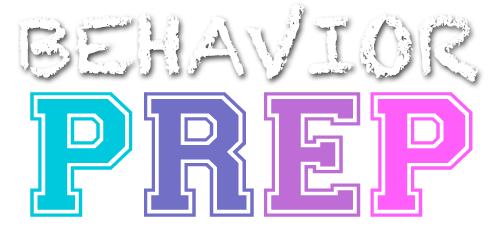G.12 Select and implement behavior chaining procedures
A BCBA may use various chaining procedures to teach complex skills and behavior sequences. Here are detailed procedures for four commonly used chaining techniques: backward chaining, forward chaining, total task chaining, and chaining with leaps ahead, along with examples.
Backward Chaining
Backward chaining involves teaching a behavior sequence by initially prompting and reinforcing all steps except the last one, and gradually fading prompts as the learner masters each step. The last step is taught last and is reinforced by completing the entire chain.
Procedure:
- Identify the behavior sequence and break it down into individual steps.
- Teach and reinforce all steps except the last one.
- Prompt and guide the learner through the final step and provide reinforcement for completing the entire chain.
Example: Teaching a child to tie shoelaces using backward chaining independently:
Step 1: Model and guide the child through all steps of tying the shoelaces except for the final knot-tying step.
Step 2: Prompt the child to complete the knot-tying step.
Step 3: Once the child can independently complete all other steps, fade prompts and reinforce the child for completing the entire shoe-tying sequence.
Forward Chaining
Forward chaining involves teaching a behavior sequence by initially prompting and reinforcing only the first step and gradually adding subsequent steps until the entire sequence is mastered. The learner completes the remaining steps independently or with minimal assistance.
Procedure:
- Identify the behavior sequence and break it down into individual steps.
- Teach and reinforce the first step of the sequence.
- Gradually add and teach subsequent steps while maintaining reinforcement for the already mastered steps.
Example: Teaching a child to wash hands using forward chaining independently:
Step 1: Prompt and guide the child to turn on the faucet and wet their hands.
Step 2: Once the child can consistently perform step 1, add the next step of applying soap and prompt for that step.
Step 3: Gradually add subsequent steps, such as rubbing hands together, rinsing, and drying, while reinforcing the child for completing the entire handwashing sequence.
Total Task Chaining
Total task chaining involves teaching the entire behavior sequence from start to finish in each teaching session. The learner receives prompts and assistance for each step as needed until they can independently complete the entire task.
Procedure:
- Identify the behavior sequence and break it down into individual steps.
- Teach and prompt all steps in each teaching session.
- Gradually fade prompts and assistance as the learner becomes more independent.
Example: Teaching a child to independently make a sandwich using total task chaining:
Step 1: Provide prompts and assistance for each step of sandwich-making, from gathering ingredients to assembling and cutting.
Step 2: Fade prompts and assistance gradually as the child becomes more proficient in each step.
Step 3: Continue to reinforce the child for independently completing the entire sandwich-making task.
Chaining with Leaps Ahead
Chaining with leaps ahead involves teaching a behavior sequence by teaching and reinforcing selected steps out of order or introducing more complex steps earlier in the learning process. This technique allows for faster acquisition of the entire behavior sequence.
Procedure:
- Identify the behavior sequence and determine which steps can be taught out of order or in a more advanced manner.
- Teach and reinforce selected steps that can be mastered early in the sequence.
- Gradually add and teach other steps, incorporating the previously learned steps into the sequence.
Example: Teaching a child to brush teeth using chaining with leaps ahead independently:
Step 1: Teach and reinforce easier steps, such as wetting the toothbrush and applying toothpaste.
Step 2: Introduce more complex steps, such as brushing the back teeth or flossing, earlier in the sequence.
Step 3: Gradually add and teach the remaining steps, connecting the previously learned steps with the new ones until the entire teeth-brushing sequence is mastered.
By utilizing chaining techniques, a BCBA can systematically teach complex behavior sequences and help learners acquire new skills. The choice of chaining method depends on the specific behavior, the learner’s abilities, and the overall learning goals. It’s important to provide clear prompts, and reinforcement, and gradually fade prompts as learners become more independent at each step of the chain.
